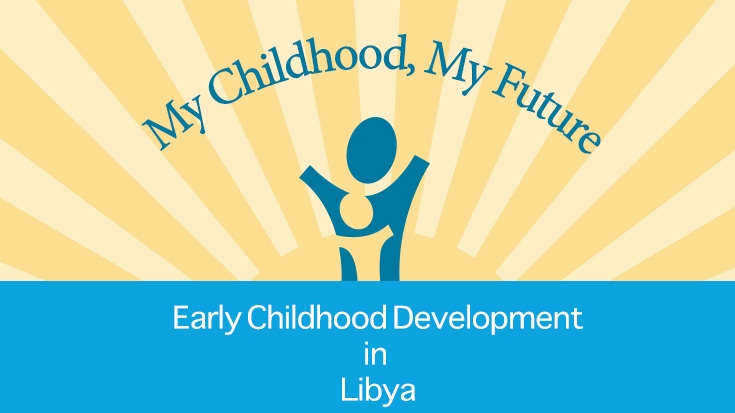The status of Early Childhood Development (ECD) in Libya
- Libya had achieved very high coverage of a skilled attendant being present at deliveries (99%), but there remain gaps in prenatal care (94%) and regular prenatal care (75%).
- While 87% of children are fully immunized, the 13% of children who are not are at increased risk of early death or illness.
- More than one-fifth (21%) of children under the age of 5 are stunted by poor nutrition.
- Only half (52%) of children live in households with adequately iodized salt, leaving the other half at risk of impaired cognitive development.
- Only 18% of 5 year olds are in early childhood education programs.
Figure 1. Early childhood development indicators for Libya (%)
Source: Authors’ calculations based on Libya PAPFAM 2007
Children in Libya have very different opportunities of healthy development based on factors beyond their control.
There are substantial differences in the opportunities children have for healthy development and accumulating human capital. Early childhood is when cycles of poverty and inequality are transmitted across generations. Children tend to be consistently advantaged or disadvantaged across a variety of different dimensions of ECD, and can face very different life chances based on just a few family background characteristics. If we observe a child who lives in the poorest 20% of households, with uneducated parents (a “least advantaged” child), and compare that child to one who has parents with higher education and is from the richest 20% of households (a “most advantaged” child), we find they have different chances of healthy early childhood development. Figure 2 presents the chances (predicted chance) of different ECD indicators (based on regressions) for these “least advantaged” and “most advantaged” individuals.
For every indicator, the least advantaged child faces a poorer chance of healthy development. Comparing the least and most advantaged, the gap in prenatal care is 22 percentage points, and the gap in regular prenatal care is 43 percentage points. The least advantaged child is five times more likely to die in the first month, and seven times more likely to die in the first year of life. The least advantaged child is 18 percentage points less likely to be immunized and 8 percentage points more likely to be stunted. There is a 33 percentage point gap in access to iodized salt. The largest difference is in Early Childhood Care and Education (ECCE), with the most advantaged child 17 times more likely to be in ECCE than the least advantaged. The least advantaged child is also almost twice as likely to be engaged in child labor.
Figure 2. Inequality in the chances for healthy early childhood development (%)
Source: Authors’ simulations of chances for a “most advantaged” and a “least advantaged” child based on calculations using Libya PAPFAM 2007


